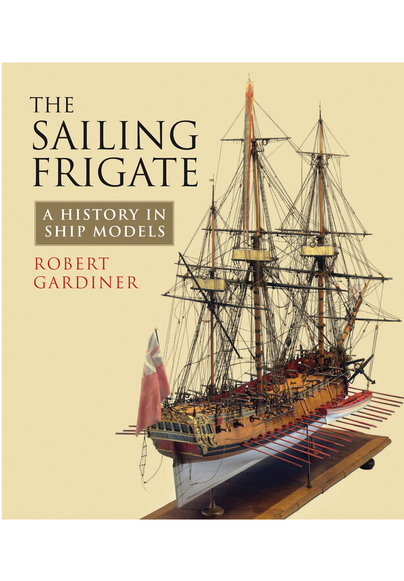
The Sailing Frigate: A History in Ship Models. By Robert Gardiner. Seaforth Publishing, Barnsley, 2016 reprint
Reviewed by John Johnston
THE Military Revolution is a cliché for the changes in military and naval technology that took place between the sixteenth and the eighteenth centuries. The phrase suggests sudden and rapid changes, in which new technologies swept older technologies aside. The reality, as Robert Gardiner shows in this beautifully illustrated book, was a process of gradual and incremental improvements to existing technologies.
Using the UK National Maritime Museum’s collection of ship models, Gardiner shows how the fast sailing galley of the seventeenth-century Dunkirk privateers became the sleek sailing vessel that enforced the blockade of the French coasts through the revolutionary and the Napoleonic wars. Changes to a ship’s design might be minor, placing gangways between the forecastle and the quarterdeck, for instance, or as radical as placing copper plates onto the hull below the waterline. Both, however, gave English frigates to stay at sea for longer and so enabled the Royal Navy to maintain a continuous blockade of the continental coasts such as had not previously been seen.
Gardiner clearly explains such changes in simple language and uses the ship models to illustrate how the changes were put into effect. Anyone wishing to see how naval architecture changed during the age of sail and how those changes impacted on naval tactics could not do better than to start with this guide to the design of ships through that era.



